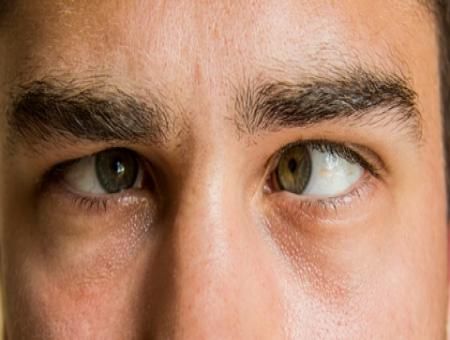Introduction to Squint Eye (Strabismus)
Squint eye, also known as strabismus, is a condition where the eyes do not align properly. While one eye looks straight ahead, the other eye may point inward, outward, upward, or downward. This misalignment can be constant or occur intermittently. Squint eye is a common condition, affecting both children and adults, and can have a significant impact on vision, appearance, and overall quality of life.
People with squint eyes often experience issues with depth perception and may suffer from double vision. In some cases, the brain suppresses the visual input from the misaligned eye to avoid confusion, which can lead to amblyopia (lazy eye). Early diagnosis and treatment are crucial to prevent permanent vision problems and improve eye alignment.
Types of Squint Eye (Strabismus)
There are several types of squint eye, each classified based on the direction of the misalignment:
- Esotropia: One or both eyes turn inward toward the nose.
- Exotropia: One or both eyes turn outward.
- Hypertropia: One eye is higher than the other.
- Hypotropia: One eye is lower than the other.
Each type of squint eye can vary in severity and frequency. Some people may experience squinting occasionally, while others may have constant misalignment. The condition can be present from birth (congenital) or develop later in life due to various causes.
Causes of Squint Eye
Several factors can lead to squint eye, and understanding the root cause is essential for determining the most effective treatment plan. Some common causes include:
- Congenital factors: Squint eye can develop due to abnormalities in the muscles controlling eye movement or issues with the brain’s ability to coordinate the eyes.
- Refractive errors: Conditions such as myopia (nearsightedness), hyperopia (farsightedness), or astigmatism can cause squinting if left untreated.
- Injury or trauma: Head or eye injuries may damage the muscles or nerves responsible for controlling eye movement, resulting in strabismus.
- Neurological conditions: Certain neurological disorders like cerebral palsy, stroke, or brain tumors can disrupt the brain’s control over eye alignment.
- Genetic factors: A family history of squint eye can increase the likelihood of developing the condition.
Symptoms of Squint Eye
Symptoms of squint eye can vary depending on the severity and type of misalignment. Common signs include:
- Misaligned eyes: The most obvious symptom is one or both eyes pointing in different directions.
- Double vision: Some people experience double vision, especially when the squint occurs intermittently.
- Blurred vision: A lack of proper focus can cause vision to become blurry.
- Head tilting or turning: To compensate for the misalignment, individuals may tilt or turn their head to improve their vision.
- Eye strain and discomfort: Squinting often leads to eye strain, headaches, and discomfort, especially when trying to focus on near or distant objects.
- Poor depth perception: Squint eye can affect depth perception, making it challenging to judge distances accurately.
Diagnosis of Squint Eye
Early diagnosis is essential for effective treatment. A thorough eye examination by an ophthalmologist or orthoptist can help diagnose squint eye and determine the best course of treatment. The diagnostic process may include:
- Visual acuity test: This measures the sharpness of vision in each eye to check for refractive errors or amblyopia.
- Corneal light reflex test: A light is shone into the eyes to assess their alignment by observing the reflection in the pupils.
- Cover test: The doctor covers one eye at a time to assess how the uncovered eye moves to maintain focus.
- Retinal examination: A detailed examination of the retina can help identify any underlying conditions affecting vision.
Squint Eye Treatment Options
Squint eye treatment requires a comprehensive approach that addresses both the misalignment and any associated visual impairments. The choice of treatment depends on factors such as the age of the patient, the severity of the squint, and its underlying cause. Here are the most common treatment options for squint eye:
1. Glasses or Contact Lenses
For individuals with refractive errors like farsightedness or astigmatism, wearing corrective glasses or contact lenses can help improve focus and reduce eye strain. In some cases, this alone may correct the misalignment, especially in children. Regular eye check-ups are crucial to ensure the prescription is up to date and effective.
2. Vision Therapy
Vision therapy is a non-surgical treatment option that aims to improve eye coordination and strengthen the eye muscles. It involves a series of eye exercises and activities designed to enhance visual skills. Vision therapy is often recommended for children with squint eye or those who experience intermittent misalignment.
Some common techniques used in vision therapy include:
- Eye tracking exercises: These exercises improve the ability to follow moving objects with both eyes.
- Convergence exercises: These help the eyes work together to focus on near objects.
- Stereoscopic activities: These exercises improve depth perception and 3D vision.
Vision therapy can be highly effective in cases of mild to moderate squint eye, particularly when combined with other treatments like corrective lenses.
3. Patching (Occlusion Therapy)
Patching is a common treatment for amblyopia (lazy eye) that often accompanies squint eye. The stronger eye is covered with a patch for several hours each day to encourage the weaker eye to work harder. Over time, this helps improve vision in the weaker eye and can reduce the severity of the squint. Patching is most effective when started at an early age, but it can also be beneficial for older children and adults.
4. Botox Injections
In some cases, Botulinum toxin (Botox) injections can be used to temporarily weaken the overactive eye muscles responsible for the misalignment. This allows the weaker muscles to strengthen and improve eye alignment. Botox injections are typically used for adults or in cases where surgery is not an option. The effects of Botox are temporary, lasting several months, and may need to be repeated periodically.
5. Surgery
Surgery is often recommended when non-surgical treatments are not sufficient to correct the squint. The goal of squint eye surgery is to adjust the muscles around the eye to improve alignment. There are different types of surgery, depending on the severity and type of misalignment:
- Recession surgery: This involves weakening the overactive eye muscles by moving them to a different position.
- Resection surgery: In this procedure, the surgeon shortens or tightens the weaker muscles to increase their strength and improve alignment.
Squint eye surgery is generally a safe and effective treatment, with many patients experiencing significant improvements in eye alignment and visual function. However, multiple surgeries may be required in some cases, especially if the condition recurs.
Post-Treatment Care and Recovery
After squint eye treatment, whether surgical or non-surgical, follow-up care is crucial to monitor progress and prevent recurrence. Patients are typically advised to:
- Attend regular eye exams to ensure the eyes remain aligned and any refractive errors are managed.
- Continue vision therapy or eye exercises as recommended by the doctor.
- Wear glasses or contact lenses as needed to maintain clear vision and reduce eye strain.
In the case of surgery, recovery time is usually short, with most patients resuming normal activities within a few days. However, it is essential to follow the doctor’s post-operative instructions, including avoiding strenuous activities and protecting the eyes from injury during the healing process.
Outcomes and Benefits of Squint Eye Treatment
Successful treatment of squint eye can lead to numerous benefits, including:
- Improved eye alignment: Correcting the misalignment enhances appearance and boosts self-confidence.
- Better vision: Addressing refractive errors and amblyopia improves overall visual function, allowing for clearer vision and better depth perception.
- Reduced eye strain: Proper alignment reduces the strain on the eyes, resulting in less discomfort and fewer headaches.
- Enhanced quality of life: Correcting squint eye helps individuals lead a more active and fulfilling life, improving their ability to engage in work, social, and recreational activities.
Conclusion
Squint eye (strabismus) is a treatable condition that can significantly impact vision and quality of life. With various treatment options available, ranging from corrective lenses and vision therapy to surgery, most individuals can achieve improved eye alignment and visual function. Early diagnosis and intervention are key to preventing complications like amblyopia and ensuring the best possible outcomes.
If you or a loved one is experiencing symptoms of squint eye, it is essential to seek professional evaluation and explore the most suitable treatment options to improve vision and overall well-being.
Read More – Embracing the Hindu Calendar: Insights on Rahu Kaal Today




One thought on “Squint Eye Treatment: Understanding, Options, and Outcomes”